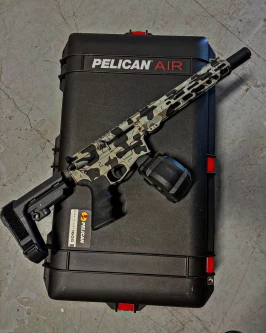Over the last 5 years the technological developments in thermal imaging scopes and sensors have seen an exponential growth.
Miniaturization and Portability:
- Advances in materials and manufacturing techniques have led to the miniaturization of thermal imaging components.
- Portable thermal optics, such as handheld devices and attachments for smartphones, have become more common, enabling broader applications in various industries.
Resolution Improvements:
- Ongoing research and development have resulted in higher resolution thermal sensors.
- Increased pixel density allows for clearer and more detailed thermal images, enhancing the overall effectiveness of thermal optic devices.
Integration with Other Technologies:
- Thermal optics are increasingly being integrated with other technologies, such as augmented reality (AR) and artificial intelligence (AI).
- Integration with AI algorithms enhances image processing, target identification, and overall system efficiency.
Cost Reduction:
- Advances in manufacturing processes and economies of scale have contributed to a decrease in the cost of thermal optics.
- Lower costs make these technologies more accessible to a wider range of consumers and industries.
Dual-Mode and Multispectral Imaging:
- Thermal optics are often combined with other imaging technologies, such as visible light sensors or infrared cameras, to provide dual-mode or multispectral imaging capabilities.
- This integration enhances situational awareness and allows users to gather more information from a given scene.
Applications in Diverse Industries:
- Thermal optics find applications in various industries, including military and defense, law enforcement, search and rescue, firefighting, industrial inspections, recreation, and healthcare.
- The versatility of thermal optics has contributed to their widespread adoption in different fields.
Improved Performance in Challenging Conditions:
- Ongoing research has led to improvements in the performance of thermal optics in challenging environmental conditions, such as fog, smoke, and low-visibility situations.
- Enhanced performance ensures reliability in a broader range of scenarios.
Energy Efficiency:
- Advances in sensor technology and power management contribute to increased energy efficiency in thermal optic devices.
- Energy-efficient designs extend the battery life of devices and reduce the overall power consumption.









